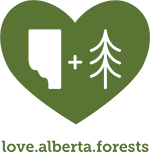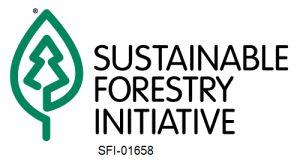Safety
Running a Safe Log Haul:
At Spray Lake Sawmills we have an established log haul safety monitoring and overload control program. Drivers are required to provide SLS with valid licenses, insurance, permits and WCB coverage. Expiry dates are monitored by SLS making sure each truck is kept current. Also, each truck is subjected to an in-depth safety inspection prior to starting the log haul and safety inspections continue throughout the hauling season.
Every load of logs delivered to Spray Lake Sawmills is inspected for load height, width, weight, and overhang. Loads are also checked for dragging debris, secure load wraps, proper flagging, tail lights and a variety of other items. Load violations are recorded and repeat offenders are penalized. The program is strictly enforced. Our fleet only hauls logs on permitted routes approved by the appropriate Municipal District and by Alberta Transportation. All public concerns are investigated and each inquiry is responded to.
Safety Note: Do not attempt to pass a log truck that is turning. Logs overhang the back wheels of the trailer and will swing into the adjacent lane when the truck is turning. Waiting only a few seconds for the truck to complete the turn will ensure the safety of you and your passengers.
Logging Roads:
These roads are single lane dirt roads with occasional pullouts for passing oncoming vehicles. Sharp corners and blind hills are not signed. Company trucks using these roads are aided by use of mobile radios.
Most of the roads we build are temporary, being used for 3 months up to 3 years. After the road is finished being used it is reclaimed making it impassable to road vehicles. When a road is not being used by SLS it may be cross-ditched to control water run-off or have other erosion controls that make the road difficult or impassable to non off-road vehicles.
The roads are generally planned for dry or frozen conditions and are not usable in wet conditions or in the spring. Our roads may be gated or impassable in sensitive areas when operations are not in progress, or as directed by the Lands and Forest Division of the Department of Sustainable Resource Development. SLS only maintains roads during active operations. Our roads are inspected twice a year and during active operations.
Due to the temporary nature of the roads, they will not appear on many maps. Traveling on these roads when they are gated or closed puts you at risk of being stranded, should you break down or get stuck. It may be many hours or days before another vehicle will show up and cell phones may not work.
When traveling logging roads where there are active operations, it is best to wait and follow a radio-equipped vehicle. Please avoid any bush road that has a log haul in progress or is closed.
Forest Fire Protection:
Fires are a natural occurrence within the forest. Historically fires have been natures way of renewing or recycling patches of forest to an earlier successional stage. As an ongoing process, this has resulted in a mosaic of forest types and ecosystems.
While fire may be good from an evolutionary perspective, today’s forests are used by many people and home to a host of commercial and recreational developments. Studying the natural disturbance patterns provides information that can be used in the planning of our harvest designs. Timber harvesting can be used to create the same biodiversity pattern as fires and reduce the fire hazard within Alberta’s forests.
Another part of today’s forest management strategy is an active forest fire detection and suppression program conducted by Sustainable Resource Development. This program uses look out towers, satellite imagery, storm tracking and public input to detect forest fires. If you spot a fire, call 310-FIRE.
Fires caused by man are preventable and are the hardest to detect, so please remember a few precautionary steps: Be careful with cigarettes and smoking materials. Make sure off-road vehicles are equipped with approved spark arresters and free of debris especially around mufflers. Make sure campfires are kept small and are thoroughly extinguished. Make sure you have safe burning conditions before igniting any brush pile.



